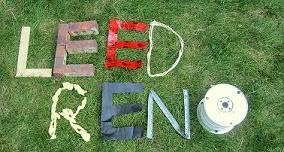It has been a while since our
temporary counters went up ... over 6 months. Probably a little longer than normal but that does include our new baby renovation hiatus.
But a big part of the problem came from the fact that we knew what we wanted and we thought we knew where to get it. Last year at the Montreal Home Show I saw a locally made recycled glass countertop. It was beautiful and functional, 90% recycled content and
locally sourced. The company was Eco-Surface. Their quote was good but their colour selection left a little to be desired. The good news was they were expanding and in 100 days would be able to provide us a much better palette to pick from.
So we put up our temporary counters and waited. Towards the 100 day mark we contacted them again to find their website directed us to:
"Creations di Verre cite". Alright, name change with expansion ... no problem. But there was a problem: nobody would pick up the phone, or respond to an email, or website inquiries. Heck their contact information on their website just provides their website address.
Chalked that up as a lost cause and headed back to square one. Looking for alternatives there were several options although none of them local:
-
EnviroGlas EnviroSLAB
-
IceStone
-
Geos Sustainable Surfaces from Eos
-
Zodiaq Terra Collection from Dupont
Out of these group, IceStone probably gets kudos for being the greenest of all the products. 100% recycled glass in concrete, No VOC, no resins, no petrochemicals. The company is very forward thinking and the entire process has received
Gold Cradle to Cradle certification. That being said it is concrete and therefore susceptible to etching and staining. Properly sealed and cared for this shouldn't be a problem but for us relying on "proper maintenance and care" is setting ourselves up. While we didn't go with it in the kitchen, we are strongly looking at it for the bathrooms.
Geos, was recommended but we struggled with finding the right colour. They also were unable to confirm their recycled content. For the countertop to qualify for LEED points it needs to be a minimum of 25% post-consumer recycled content (post-industrial counts at 50%). Geos could not confirm or guarantee that.
EnviroGlas was a little too bold a palette for us (and there were no local distributors) so we went with Zodiaq. Zodiaq countertops are a recycled glass and quartz blend embedded in a resin. Very hard, very durable, low maintenance and we found the perfect colour. Custom cut and installed by
Comptoir St-Denis, we are very pleased with the result.
The one danger of using recycled glass in any countertop or product is colour control. While it may seem easy to separate out the brown beer bottle from the green wine bottles and clear soda bottles, all you need is one little chip of green glass to potentially ruin an all white counter. Our colour "Coriander" contains clear and brown glass with the occasional fleck of green. But if you really hunt you can find a couple other odd colours. We have one speck in an obscure corner that is florescent orange. Luckily, I only spot it when I am cleaning down the counter... so not very often at all :)












